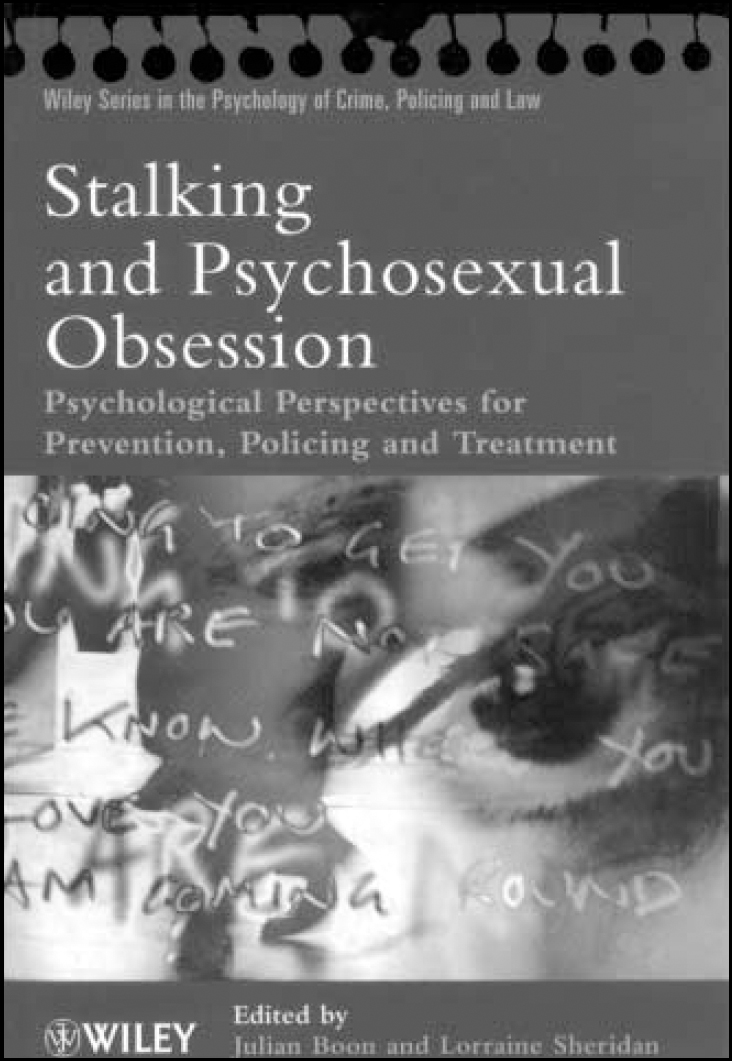
The Protection from Harassment Act 1997 was introduced to provide some protection for victims of stalking. The introduction of the Act coincided with an increasing interest in and focus on stalking within the media and the psychiatric community. This book is a welcome addition to the existing literature, providing an international perspective, with authors from a number of countries (Australia, Canada, Italy, The Netherlands, the UK and the USA) and from a variety of backgrounds (including forensic psychology, the law, the police force and criminology). As the title suggests, the book focuses mainly on stalking behaviours rather than ‘psychosexual obsession’, which is not clearly defined in the book, but which is often used synonymously. Some contributions are very good, but others do not work so well. I particularly like the Pathé & Mullen chapter, which provides a comprehensive and scholarly overview of victims of stalking, largely derived from their own seminal work in this area. As well as describing the typology of victims, they turn their attention to the secondary victims (a much-neglected group), who include family members and work colleagues, and who often become targets themselves.
Cyberstalking is a growth area and has a whole chapter devoted to it. The problem of cyberstalking mainly affects children and young people. It is not yet clear whether its effects are different from those of the more conventional forms of stalking, although preliminary data suggest that cyberstalking has a less distressing impact on the victim. One obvious difference is that cyberstalked victims are unlikely to be confronted by a violent assailant, unlike ‘true’ stalking victims. In his chapter on stalking and violence, Reid-Meloy suggests that for most victims of stalking the risk of violence is so high that clinicians should assume that an act of interpersonal violence will occur at some point. The risk of violence and physical injury is higher for the victims of domestic violence who are stalked by former partners. Other predictors of violence by stalkers are similar to the predictors of violence in other populations, in particular a history of criminal convictions and substance misuse. Interestingly, and perhaps contrary to popular stereotypes, stalking behaviours are less likely to be perpetrated by individuals with a psychotic illness than by those with a non-psychotic mental illness.
Kropp et al's chapter on the management of stalkers adopts a Canadian perspective and applies the principles of risk management using a multi-agency, multi-disciplinary perspective. It is helpful that the authors emphasise the importance of working with victims and view a victim's ‘safety planning’ as an essential aspect of risk management, as this is an area that is often neglected.
There is no real evidence that psychological therapies are effective in the treatment of stalkers, perhaps because it is not clear what, if anything, is wrong with their psychiatric health. Most discussion in the book about treatment approaches adopts a cognitive–behavioural perspective. It would have been helpful to have included a psychodynamic analysis of stalking behaviours, particularly considering the growing evidence for a relationship between stalking behaviour and security of attachment, with implications for interventions and risk management.
Other subjects discussed in the book include: erotomania in women, stalking in children and adolescents, aspects of police care and characteristics of stalkers. A minor criticism is that references are provided at the end of each chapter which, given the lack of authoritative research in this area, means that the same names crop up time after time. The overall editing of the book is also lax, with frequent repetitions between the chapters and without any attempt to link or cross-reference across chapters, making the book seem fragmented. Although this volume provides a reasonable introduction to the subject, with some excellent chapters, for the definitive account I would refer the reader to Mullen et al (Reference Mullen, Pathé and Purcell2002), a book that has yet to be bettered.



eLetters
No eLetters have been published for this article.